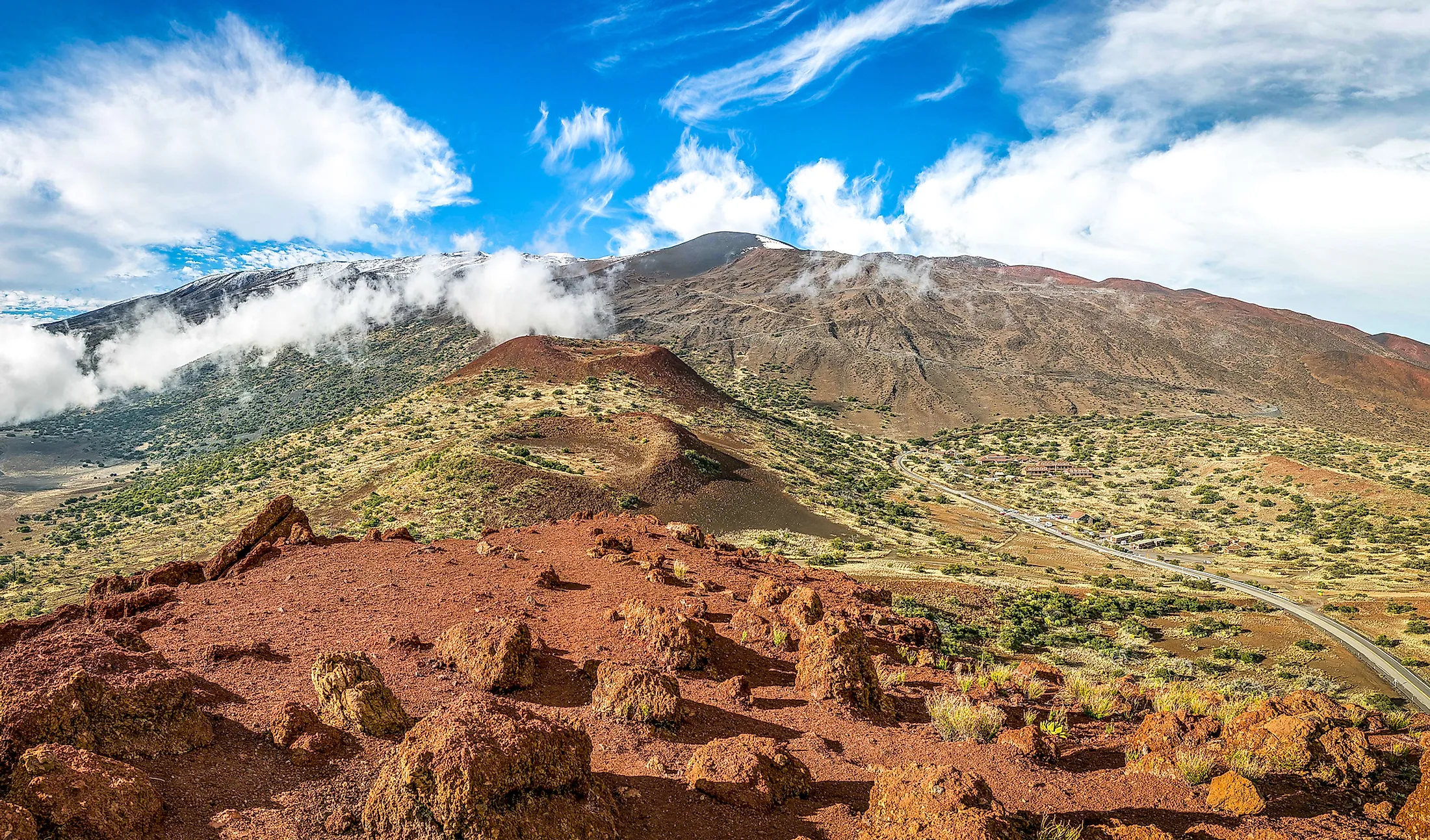
Mauna Kea
Mauna Kea is one of the five shield volcanoes in the Hawaiian Islands that form the Big Island of Hawai'i. This dormant volcano is situated in the north-central portion of the Big Island of Hawai’i in the US State of Hawaii. Rising to an elevation of 4,207.3m, Mauna Kea is considered the world’s 15th most prominent mountain peak and the highest point in the State of Hawaii. More than half of the height of Mauna Kea falls below the Pacific Ocean surface, with its base reaching a depth of 5,761m. When measured from its underwater base, Mauna Kea becomes the world’s tallest mountain, with a height of more than 9,966m, which is about 1,118m higher than Mount Everest, which reaches an elevation of 8,848m. Mauna Kea makes the island of Hawaii the world’s second-highest island and the highest island in North America.
About Mauna Kea
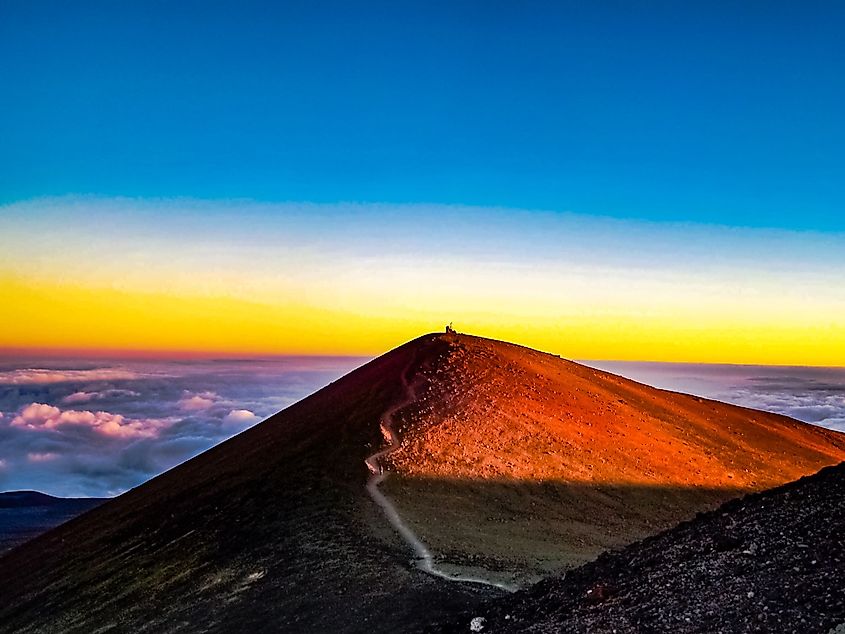
The name “Mauna Kea” is a Hawaiian term that means “White Mountain” and refers to the seasonally snowcapped summit of this giant mountain. Mauna Kea occupies a land area of 2,382.79 sq. km in the Big Island of Hawai’i. Mauna Kea has a volume of more than 32,000 cubic kilometers, and together with Mauna Loa, its massive neighbor depresses the crust of the ocean by about 6km. Due to its enormous weight, the Mauna Kea volcano continues to slip at a rate of less than 0.2 mm per year. The dome of Mauna Kea is 50km across, and there are many tiny cinder and pumice cones close to its summit. The lava flows from Mauna Kea have buried the southern slopes of the oldest Kohala volcano to the northwest, while Mauna Kea’s own western and south slopes are covered by lava flows from its active neighbor Mauna Loa. It is believed that the post-shield volcanism had buried the original eruptive fissures in the flanks of Mauna Kea. The post-shield alkali basalts of Hamakua Volcanics that erupted about 250,000 to 65,000 years ago are the oldest exposed rock strata on Mauna Kea. The post shield hawaiites and mugearites of the Laupahoehoe Volcanics that erupted about 65,000 and 4,000 years ago are considered the most recent volcanic flows on Mauna Kea.
Climate In Mauna Kea
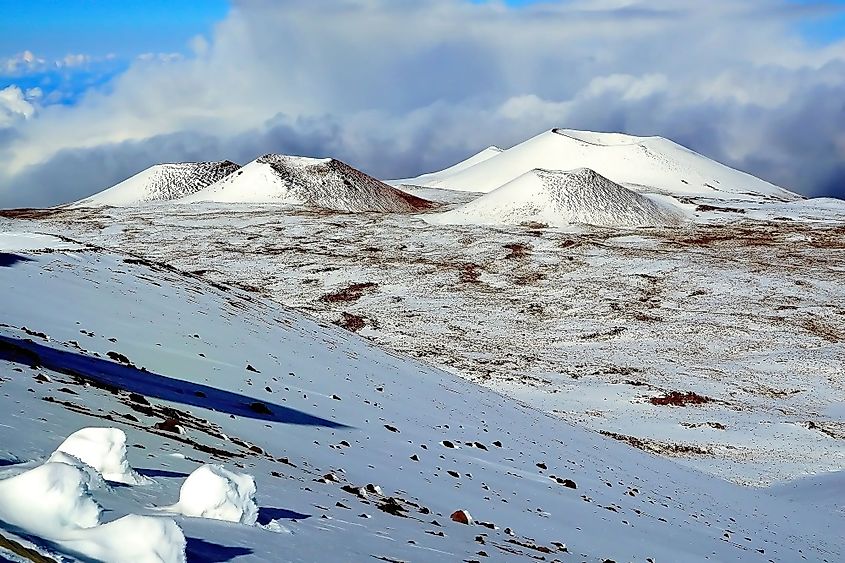
According to the Köppen climate classification, Mauna Kea experiences an alpine climate. The tropical latitude also influences the climate of Mauna Kea, but the temperature changes are very low despite the volcano’s high elevation. The average monthly temperatures remain above the freezing point throughout the year. At elevations above 3,353m, snowfall occurs mainly from October to April. Frosts are also quite common throughout the year.
Geology Of Mauna Kea
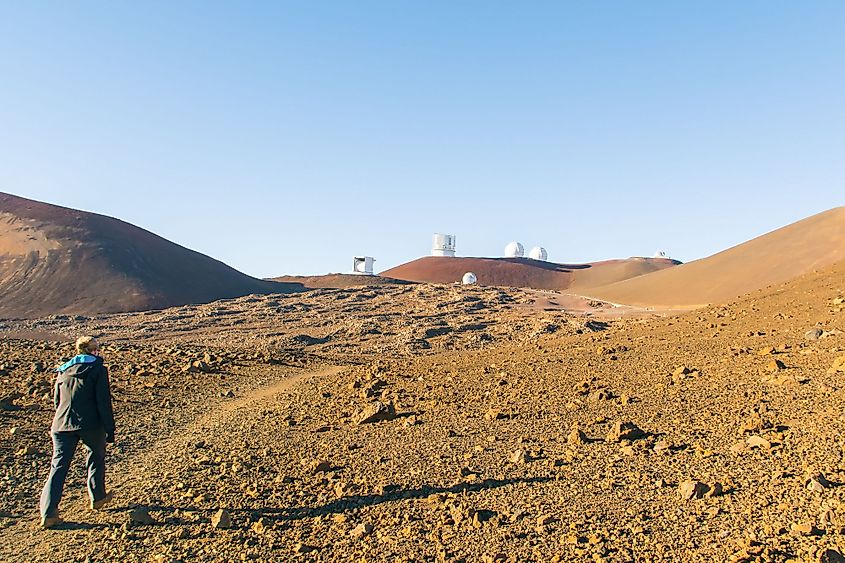
Like all other Hawaiian volcanoes, Mauna Kea was formed when the Pacific Plate moved over the Hawaiian hotspot situated in the earth’s mantle. The tectonic movement also led to the formation of a 6,000km long Hawaiian Ridge-Emperor seamount chain more than 70 million years ago. Mauna Kea is considered the fourth oldest and the fourth most active among the five hotspot volcanoes in the Hawaiian Islands. Geologists believe that Mauna Kea started to form as a pre-shield volcano about one million years ago and became highly active about 500,000 years ago during its shied stage. About 250,000 to 200,000 years ago, the volcano entered its post-shied stage, and at present, the Mauna Kea volcano is considered dormant.
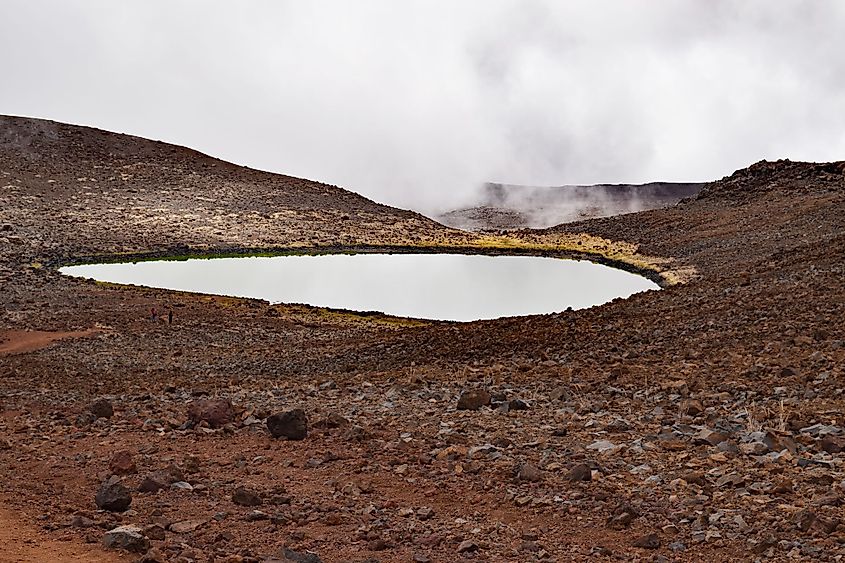
Geologists also believe that during the Ice Age, a 75m thick glacier covered the peak of Mauna Kea and formed Lake Waiau, which is considered to be the highest lake in the Pacific Basin. Lake Waiau is situated within the Pu’u Waiau cinder cone at an elevation of 3,969m. This heart-shaped lake has a surface area of 6,000 sq. m, a maximum width of 100m, and a maximum depth of 2 to 2.5m. Lake Waiau is Hawaii’s only alpine lake and one of the highest lakes in the United States.
Eruptive History Of Mauna Kea
Mauna Kea is currently considered a dormant volcano, and as per records, its last eruption occurred about 4500 years ago, which generated both lava flows and cinder cones. It is believed that between 6,000 and 4,000 years ago, the volcano erupted at least seven times, and based on its volcanic history, volcanologists believe that Mauna Kea has a recurrence interval of about 1,000 years. Therefore, scientists believe that the eruption of Mauna Kea is well ‘overdue’ and the volcano has the potential to erupt again. The experts also indicated that the eruption would occur sporadically and probably lead to little loss of life.
Ecology Of Mauna Kea
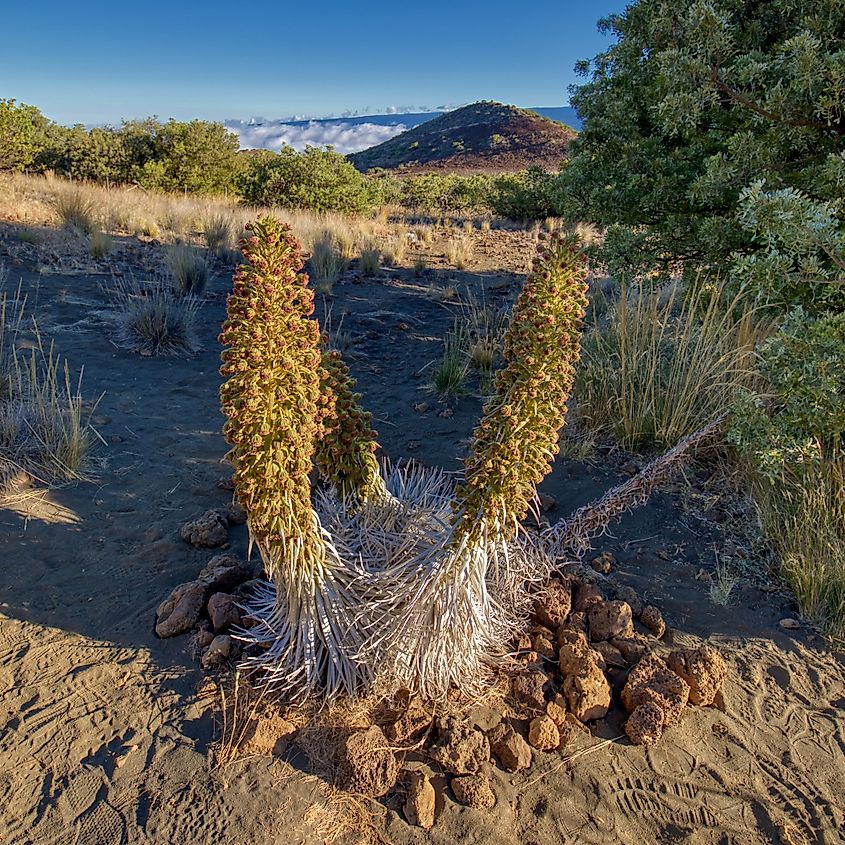
Due to its high elevation, Mauna Kea contains the most incredible diversity of ecosystems in the Hawaiian archipelago. The ecosystems on Mauna Kea can be divided into three sections: alpine-subalpine, montane, and basal forest. Mauna Kea silversword is a highly endangered endemic plant that grows in the high elevation cinder deserts of the Mauna Kea volcano. The endemic tree species that dominate the montane forests are naio and mamani, and therefore these forests are often referred to as mamani-naio forests. The lower slopes of Mauna Kea are covered by Acacia koa forest. Some of the notable animals found on the slopes of Mauna Kea include Hawaiian hawk, akepa, Hawaiian hoary bat, wekiu bugs, wolf spiders, etc.
Mauna Kea Observatories
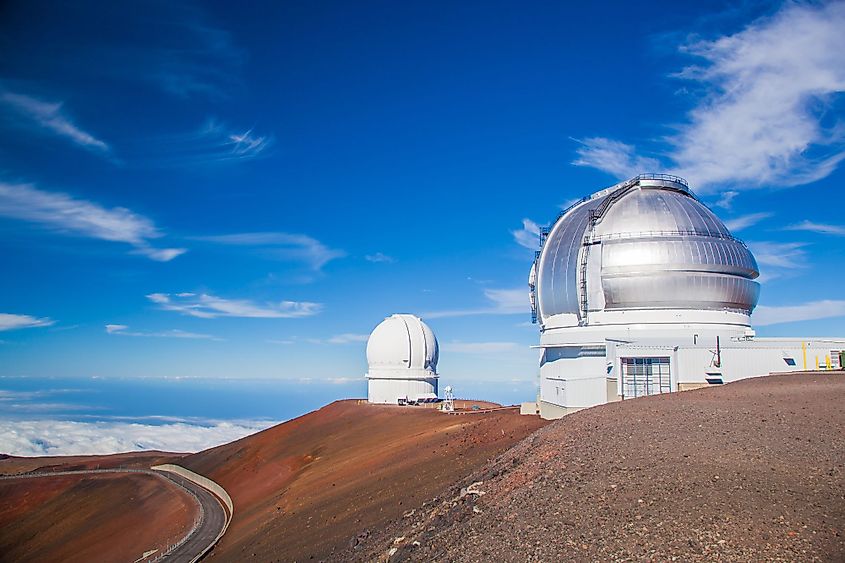
The high elevation, arid environment, and stable airflow make the summit of Mauna Kea one of the world’s most suitable sites for astronomical observations. About thirteen observation facilities have been placed here, which are operated by astronomers from eleven nations. The summit of Mauna Kea is placed above the inversion layer, and therefore most of the cloud layer remains below the summit. This ensures that the air in the summit is dry, free of turbulence and atmospheric pollution. The dark skies above the summit are also protected from light pollution from the surrounding areas, making it the perfect spot to observe the celestial objects.
Human History
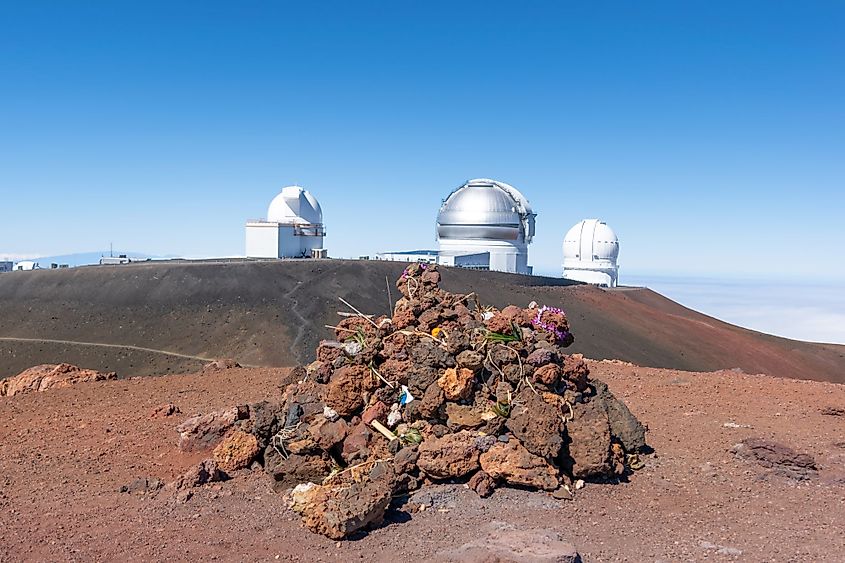
Mauna Kea and four other volcanic peaks on the island of Hawai’i are revered as ‘sacred’ by the indigenous Hawaiian people. As per Hawaiian mythology, Poli’ahu – the goddess of snow lives in the summit of Mauna Kea. About 1100AD, the native people set up several adze quarries on Mauna Kea to extract the dense basalt for making tools. The European arrival in the late 18th century led to the introduction of cattle, sheep, and other game animals, which soon caused massive damage to the volcano’s ecological balance. On August 26, 1823, an American missionary named Joseph F. Goodrich became the first person to reach the summit of Mauna Kea. The travel to Mauna Kea became relatively easier after the construction of the Saddle Road was completed in 1943.











